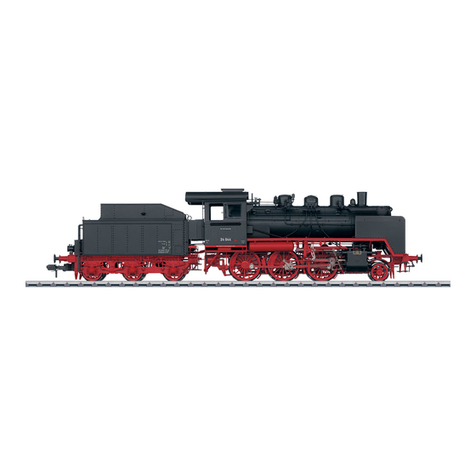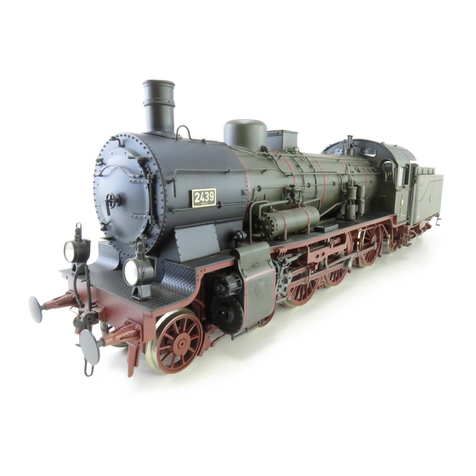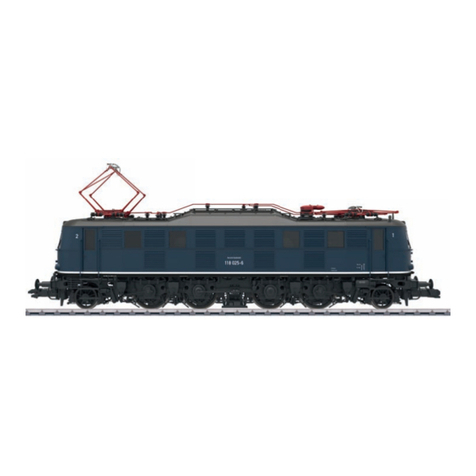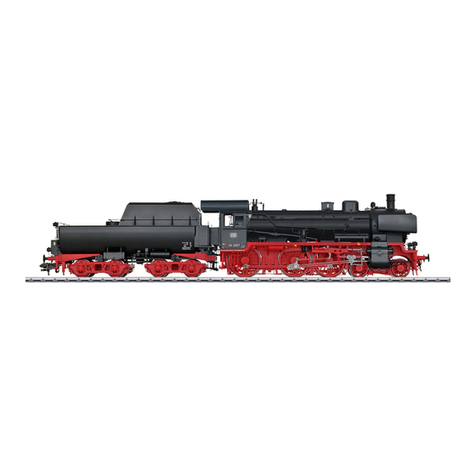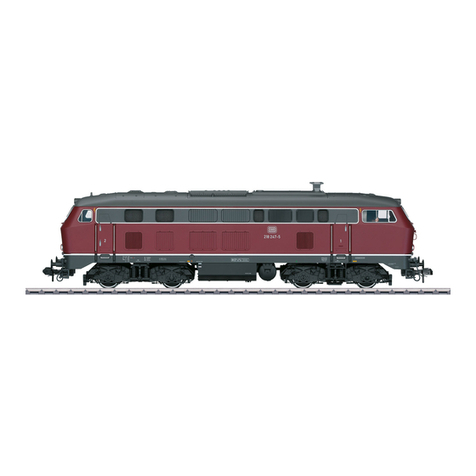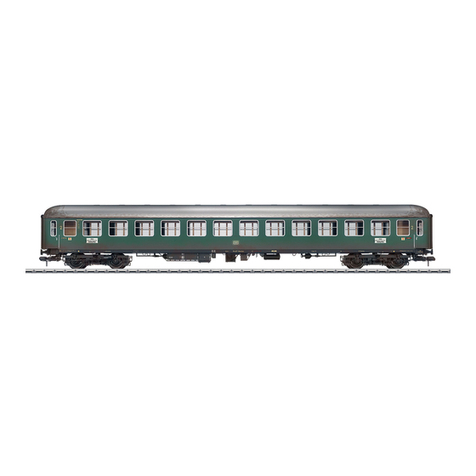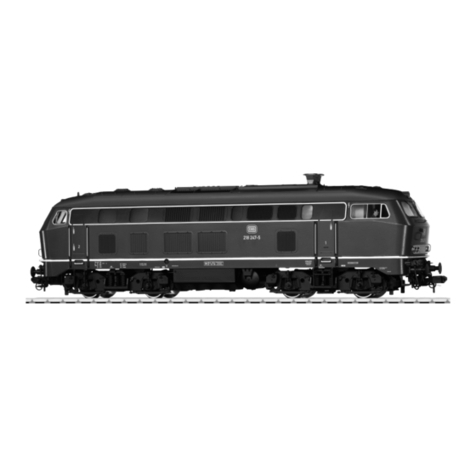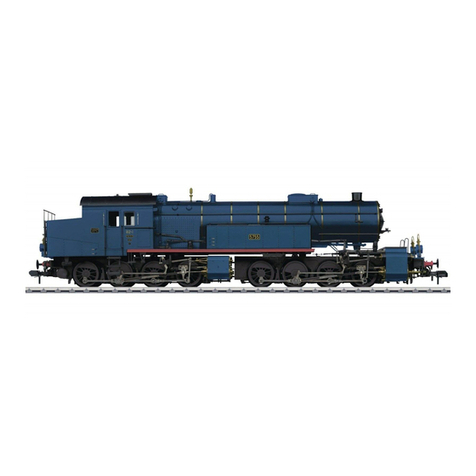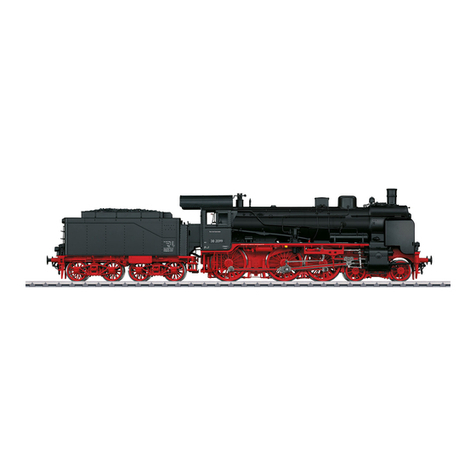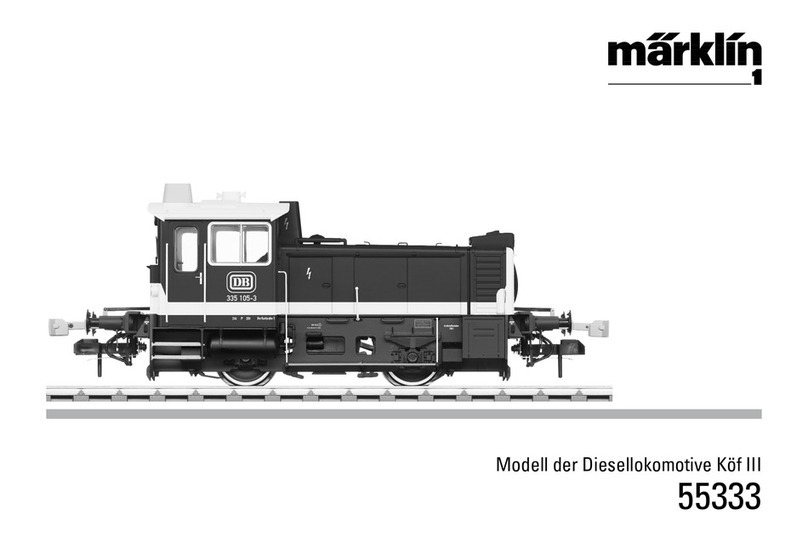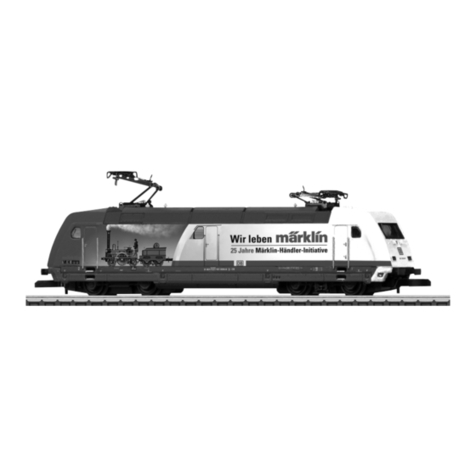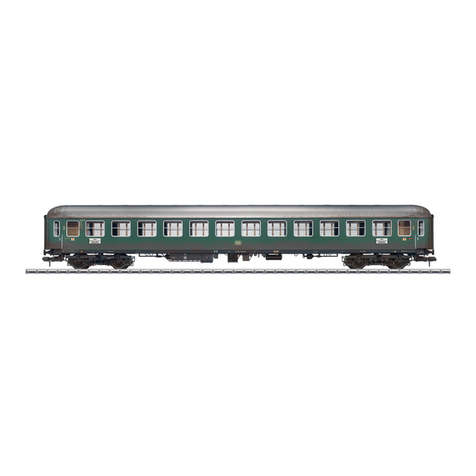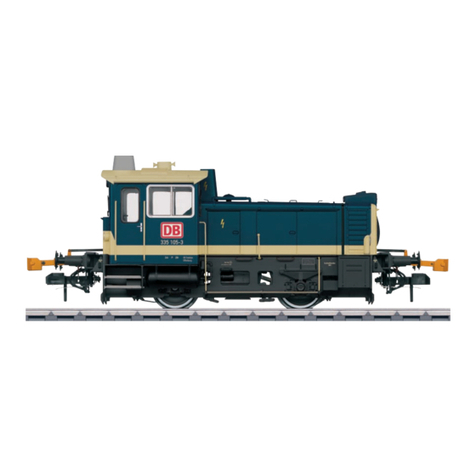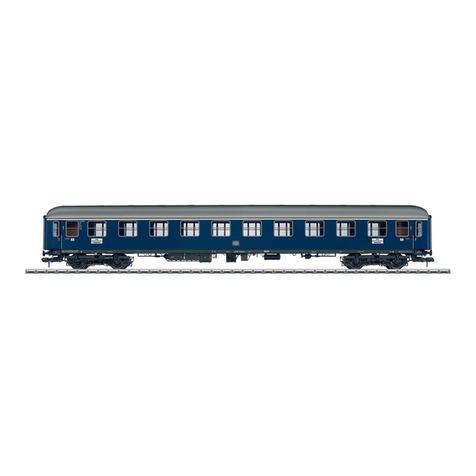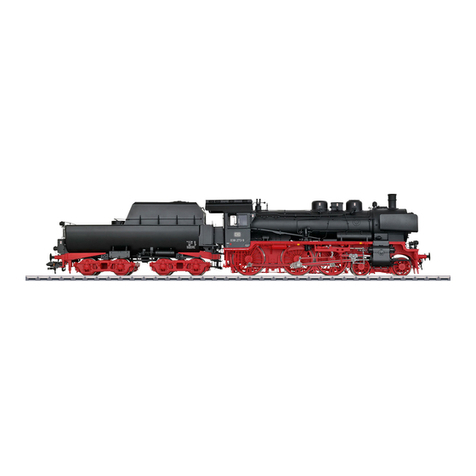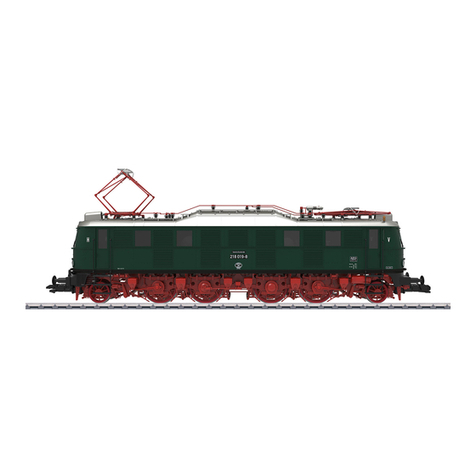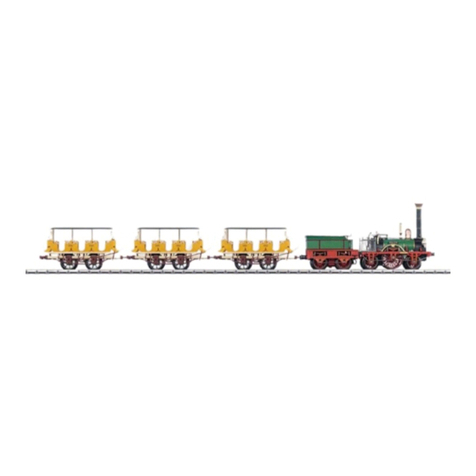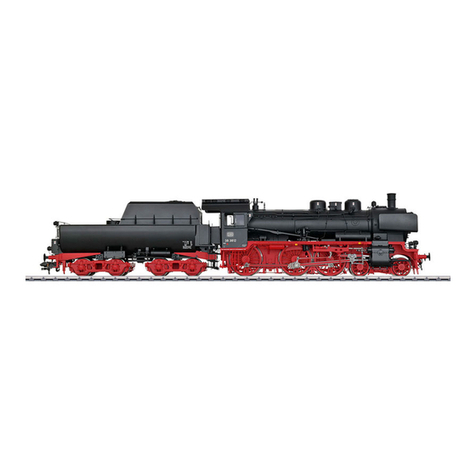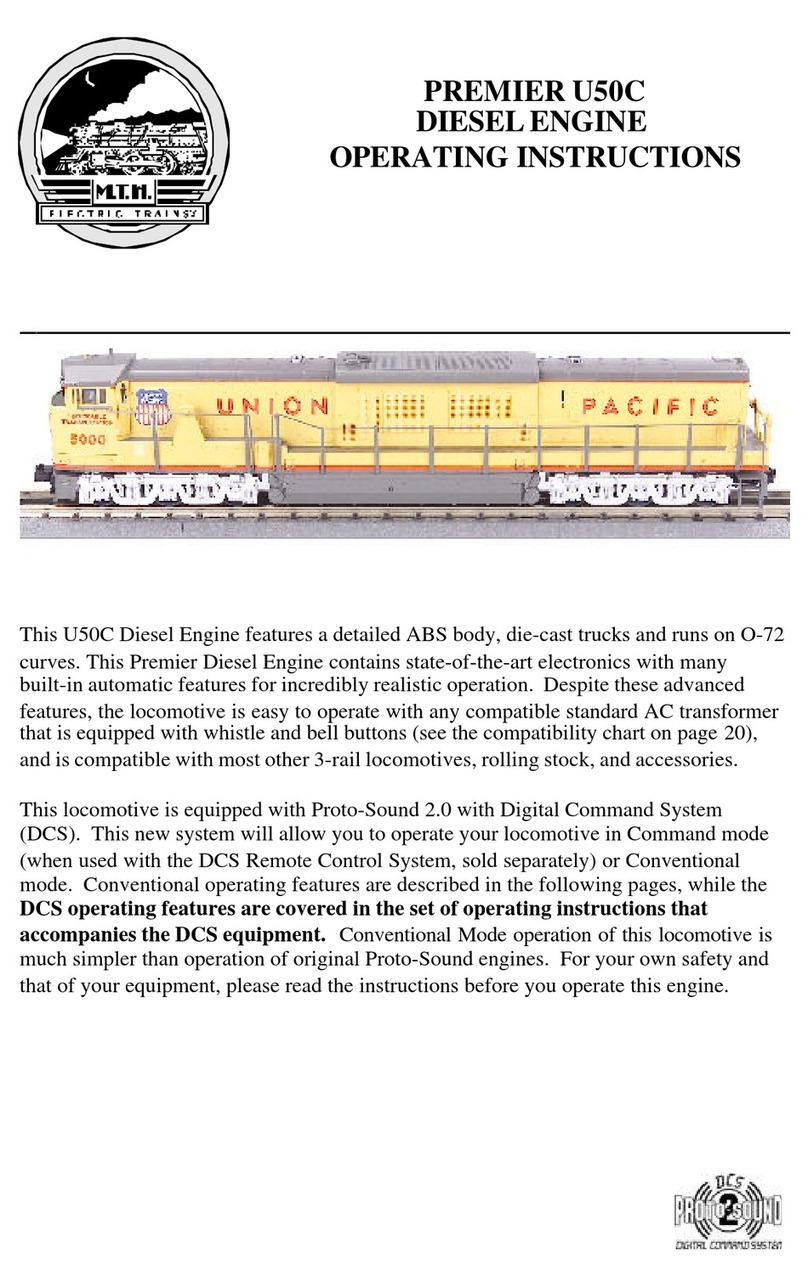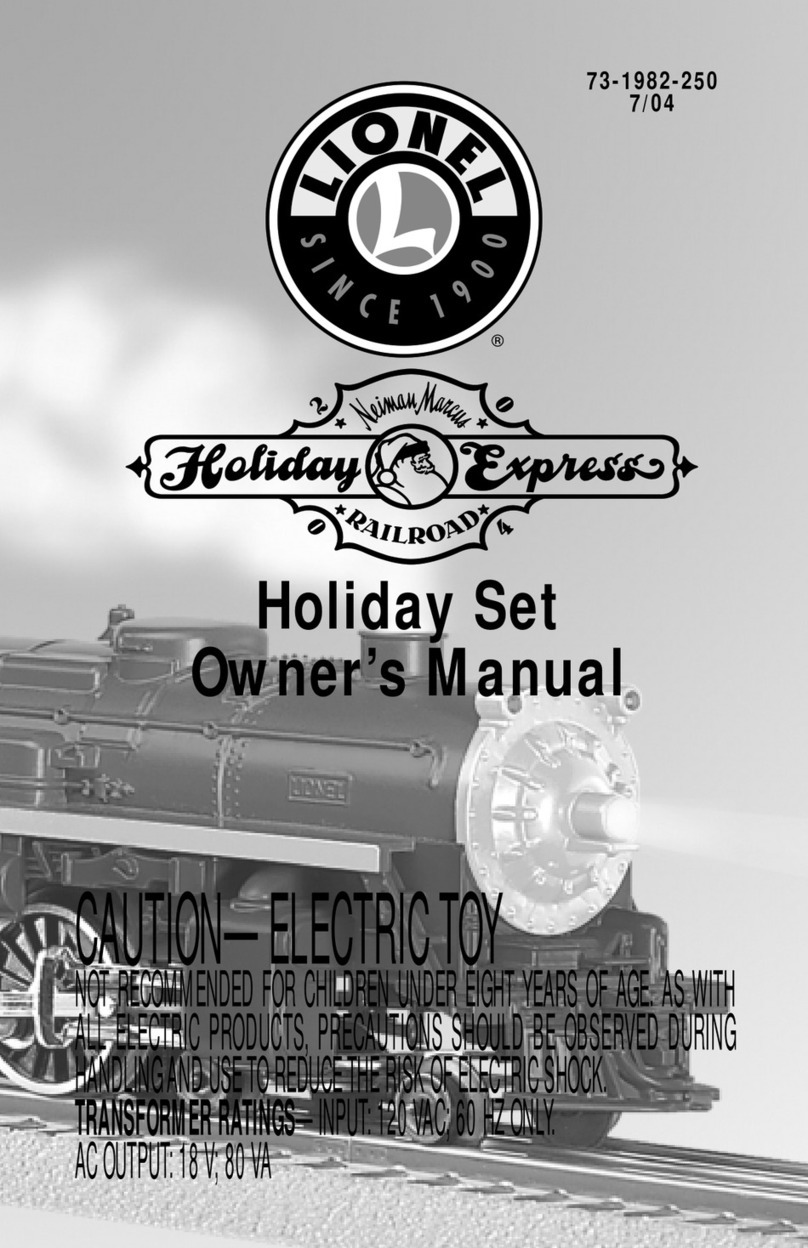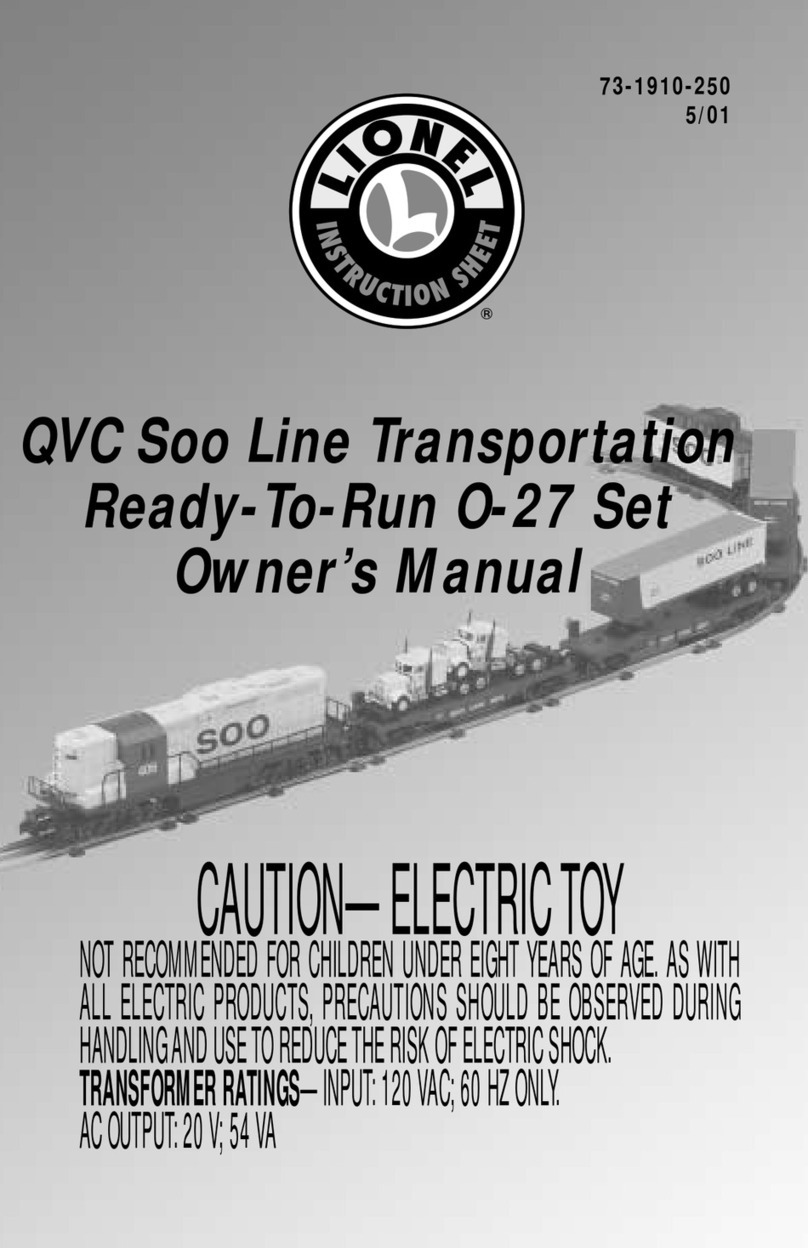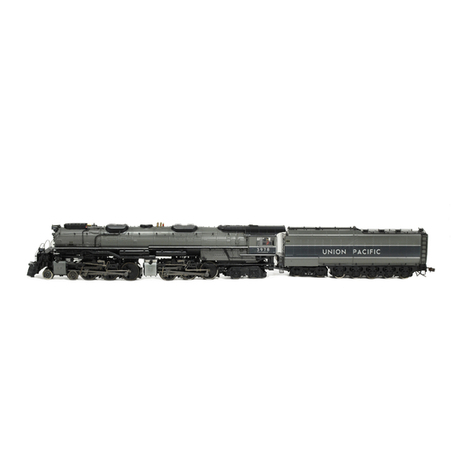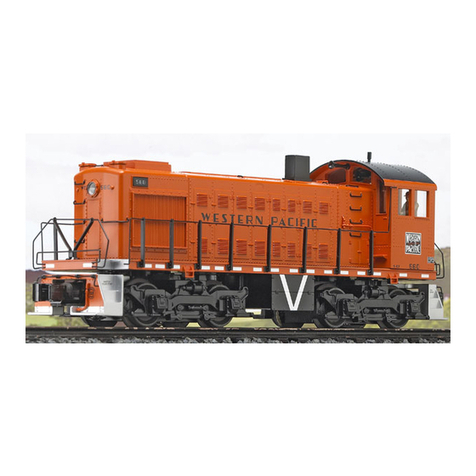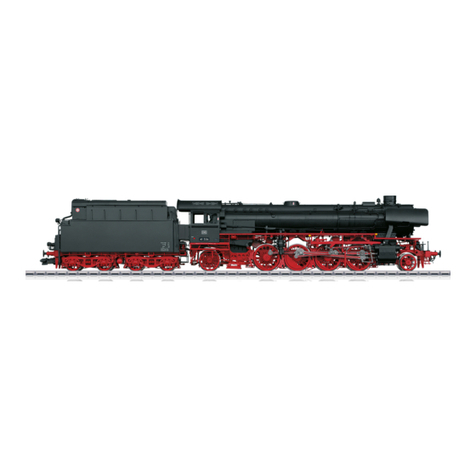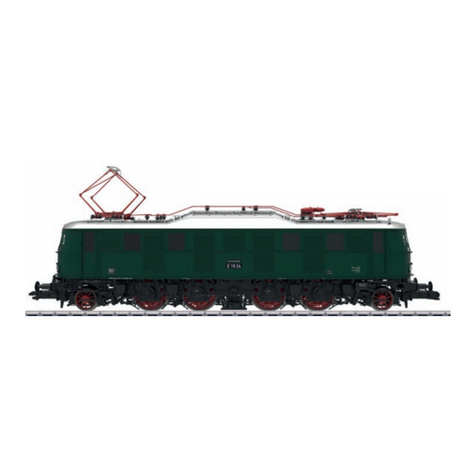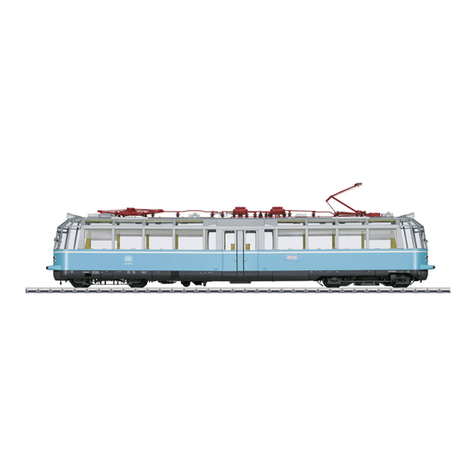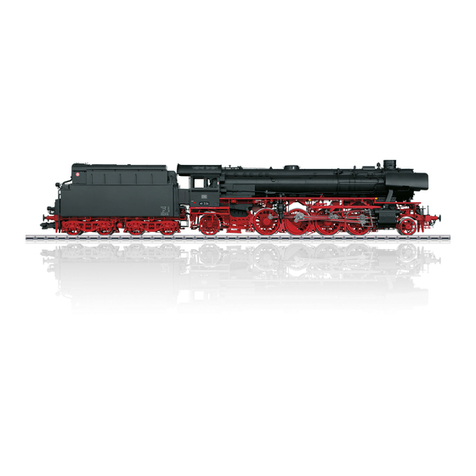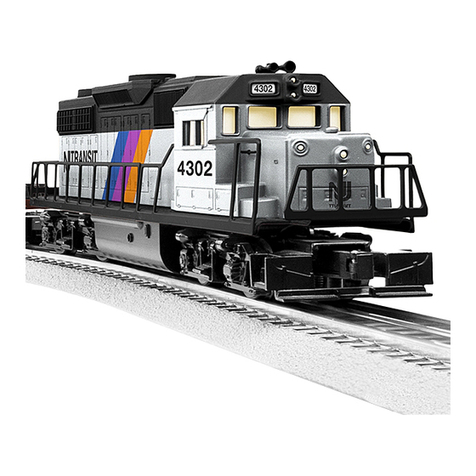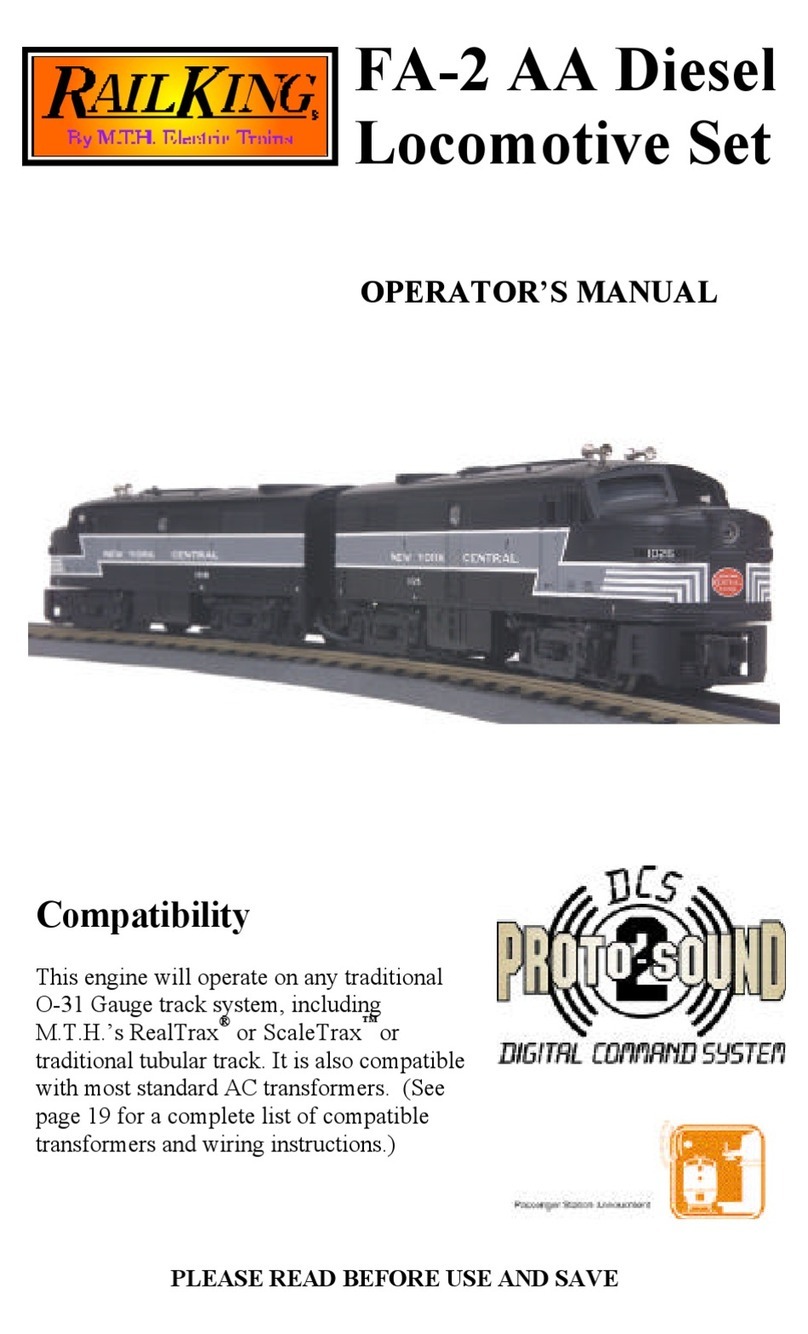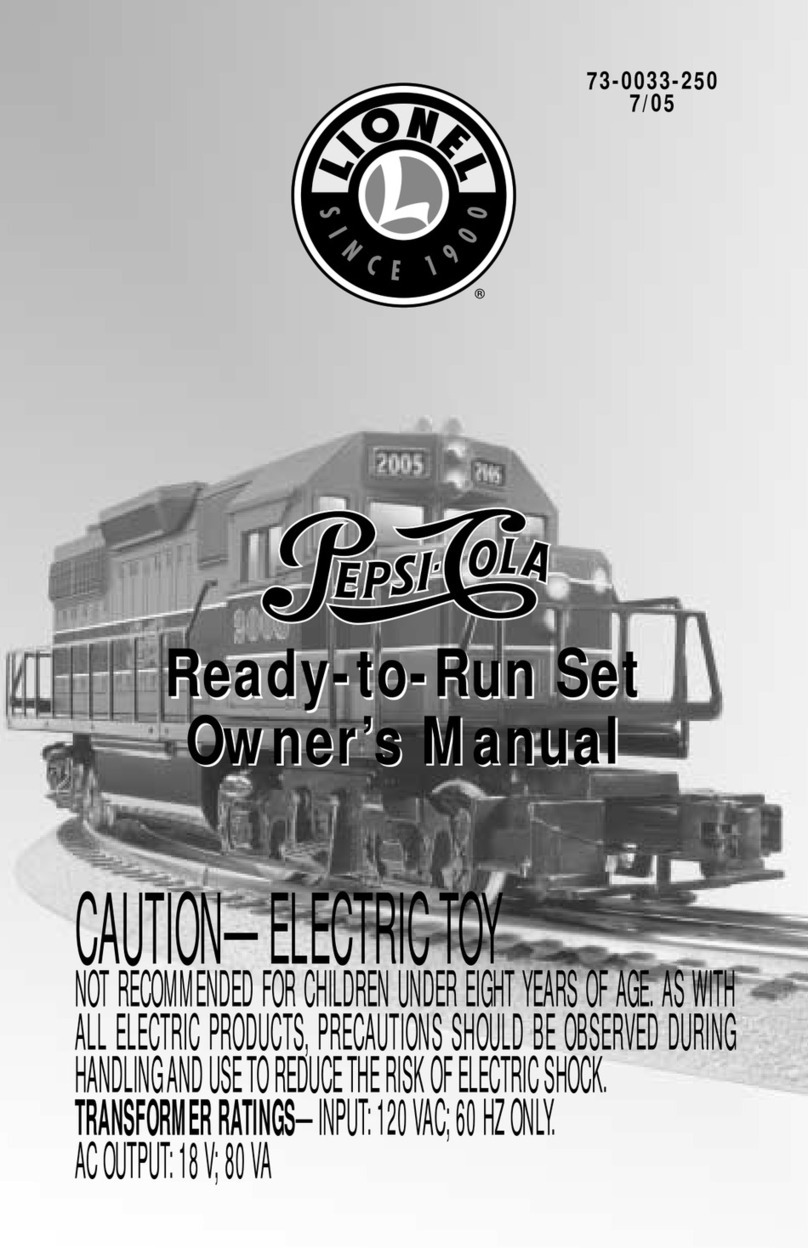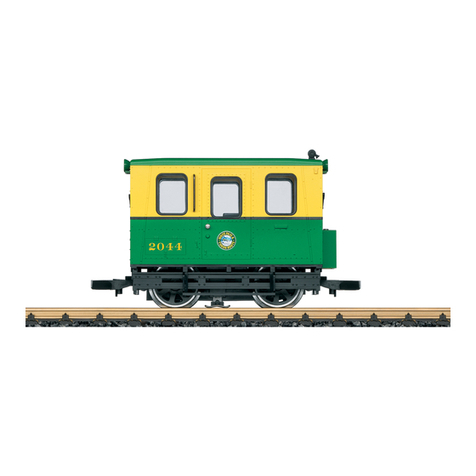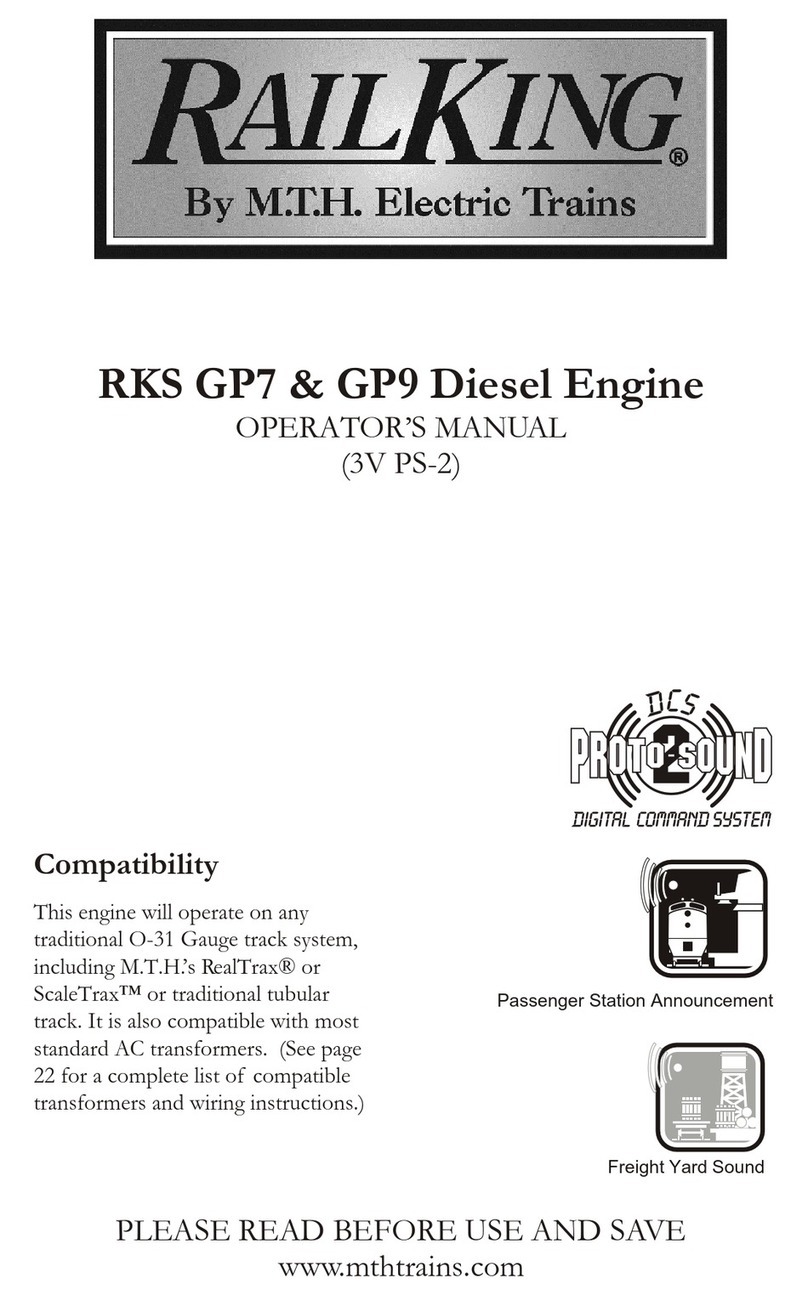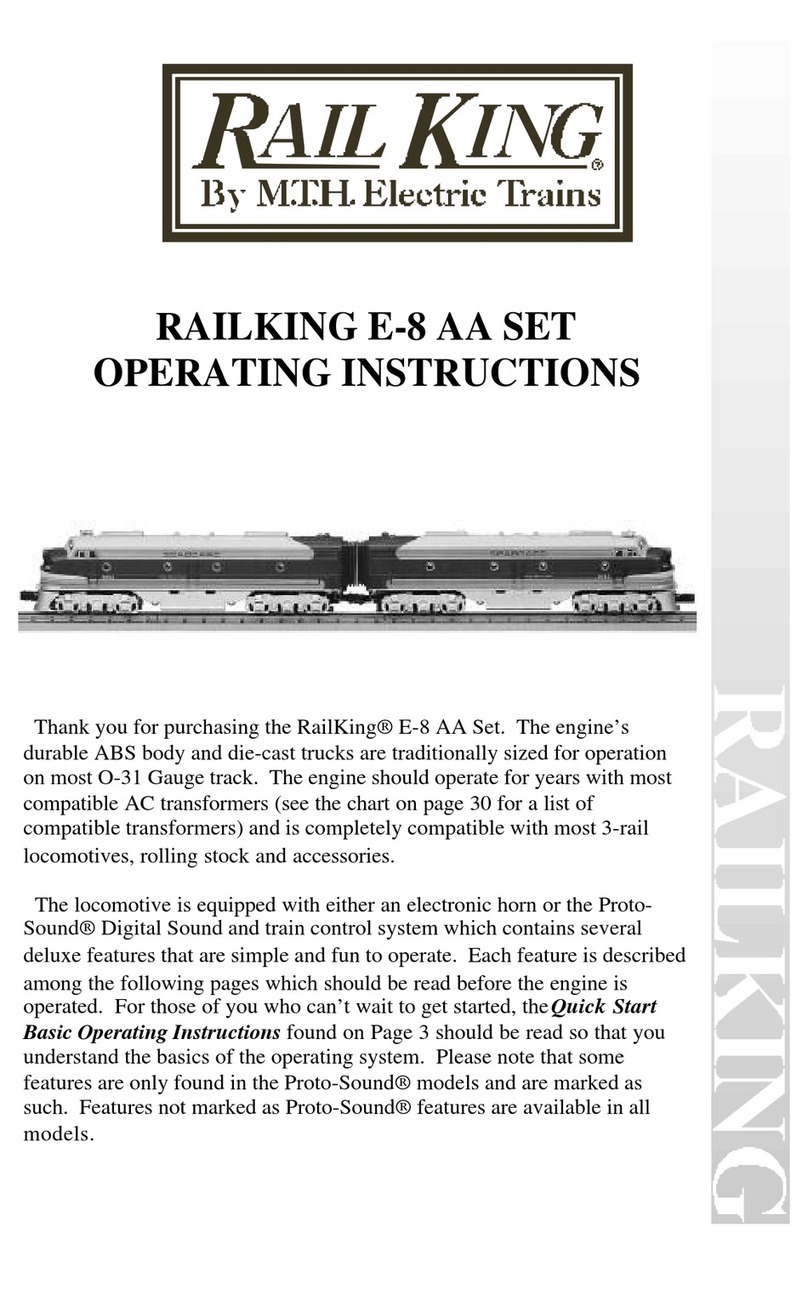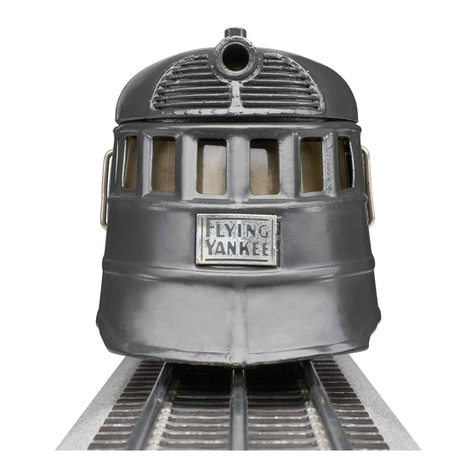8Betrieb • Operation • Fonctionnement • Exploitatie
Function
This locomotive has a built-in multi-train electronic circuit
and offers these features:
• Optional operation with DC power (max. ± 18 volts DC),
AC power (with Märklin 32 VA transformer), with Märklin
Delta (only with the 6607 Delta Station), Märklin Digital
(only with the Control Unit), or Märklin Systems (Mobile
Station, Central Station).
• The mode of operation is automatically recognized.
• 80 multi-train addresses (4 of them for the Delta System)
can be set. Address that set at the factory: 61 + 62.
• Adjustable acceleration (ABV).
• Adjustable Braking delay (ABV)
• Adjustable maximum speed.
• Setting the locomotive parameters electronically with the
Control Unit, Mobile Station or Central Station.
• Built-in sound effects circuit, can only be used in opera-
tion with the Control Unit or Märklin Systems. Additional
sound effects that can be controlled.
• The model is designed for operation on Märklin 1 Gauge
track. As the consumer you assume the risk for operating
on other makes of track.
• Minimum radius for operation: 600 mm / 23-2/3“.
• The model has a Telex coupler at both ends that can
be uncoupled with a switching command from Märklin
1- Gauge models with claw couplers, when you are in
digital/ systems operation. You may have operations pro-
blems if you use other makes of couplers.
• Except for the headlights, all of the functions are off in the
modes of operation for DC power, AC power, and Märklin
Delta.
Maintenance procedures that become necessary with
normal operation of the locomotive are described below.
Please see your authorized Märklin dealer for repairs or
spare parts.
No warranty or damage claims shall be accepted in those cases where parts
neither manufactured nor approved by Märklin have been installed in Märklin
products or where Märklin products have been converted in such a way that
the non-Märklin parts or the conversion were causal to the defects and / or
damage arising. The burden of presenting evidence and the burden of proof
thereof, that the installation of non-Märklin parts or the conversion in or of
Märklin products was not causal to the defects and / or damage arising, is
borne by the person and / or company responsible for the installation and /
or conversion, or by the customer.
Safety Warnings
•
This locomotive is to be used only with an operating
system designed
for it (Märklin 6646/6647 AC transformer,
Märklin Delta, Märklin Digital or Märklin Systems).
• This locomotive must never be supplied with power from
more than one transformer.
•
Pay close attention to the safety warnings in the instructions
for your operating system.
